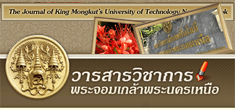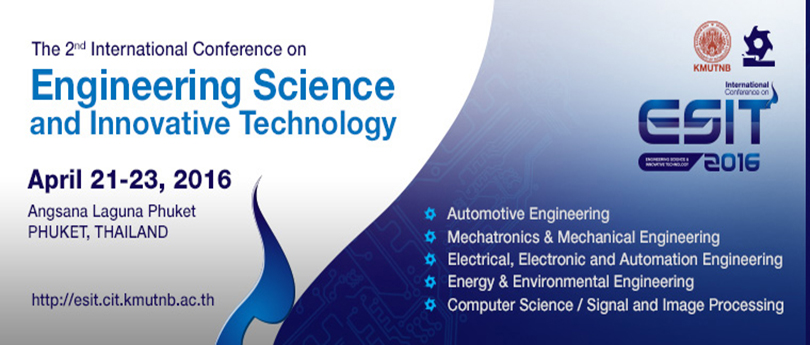Abstract
Optimal operating conditions of ammonia synthesis over iron catalyst were studied using ASPEN PLUS®. Reactant of this reaction was assumed to be N2 and H2 from synthesis gas which could be obtained from steam reforming of available feedstocks in Thailand with ratio of H2/CO = 3:1. The ammonia plant simulation was based on an adiabatic plug-flow reactor (PFR) and modeled using Sauve-Redlich-Kwong Property Method. The feed composition was fixed at 59.4% H2, 19.8% N2, 19.8% CO and 1.0% by mole Ar. Optimal temperature and pressure for ammonia synthesis via the Haber process were found to be at 231 °C and 150 atm, respectively, since an increase of pressure would cause the equilibrium position to move forward resulting in a higher yield of ammonia, as well as decreasing the temperature. However, inappropriately low temperature would show a negative effect on rate of the reaction. Iron catalyst was selected in this study as it is believed to speed up the reaction by lowering the activation energy. To produce 21.9×102 kmol/hr of NH3, the system required a feed of 11.9×103 and 39.6×102 kmol/hr of H2 and N2, respectively.
Optimal operating conditions of ammonia synthesis over iron catalyst were studied using ASPEN PLUS®. Reactant of this reaction was assumed to be N2 and H2 from synthesis gas which could be obtained from steam reforming of available feedstocks in Thailand with ratio of H2/CO = 3:1. The ammonia plant simulation was based on an adiabatic plug-flow reactor (PFR) and modeled using Sauve-Redlich-Kwong Property Method. The feed composition was fixed at 59.4% H2, 19.8% N2, 19.8% CO and 1.0% by mole Ar. Optimal temperature and pressure for ammonia synthesis via the Haber process were found to be at 231 °C and 150 atm, respectively, since an increase of pressure would cause the equilibrium position to move forward resulting in a higher yield of ammonia, as well as decreasing the temperature. However, inappropriately low temperature would show a negative effect on rate of the reaction. Iron catalyst was selected in this study as it is believed to speed up the reaction by lowering the activation energy. To produce 21.9×102 kmol/hr of NH3, the system required a feed of 11.9×103 and 39.6×102 kmol/hr of H2 and N2, respectively.
Keywords: ASPEN PLUS®, Ammonia synthesis, Iron catalyst, Synthesis Gas




